Fossils in Las Vegas: A Journey Through Time
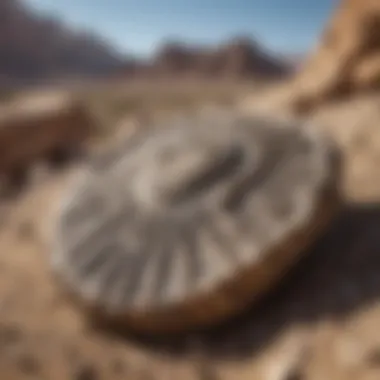
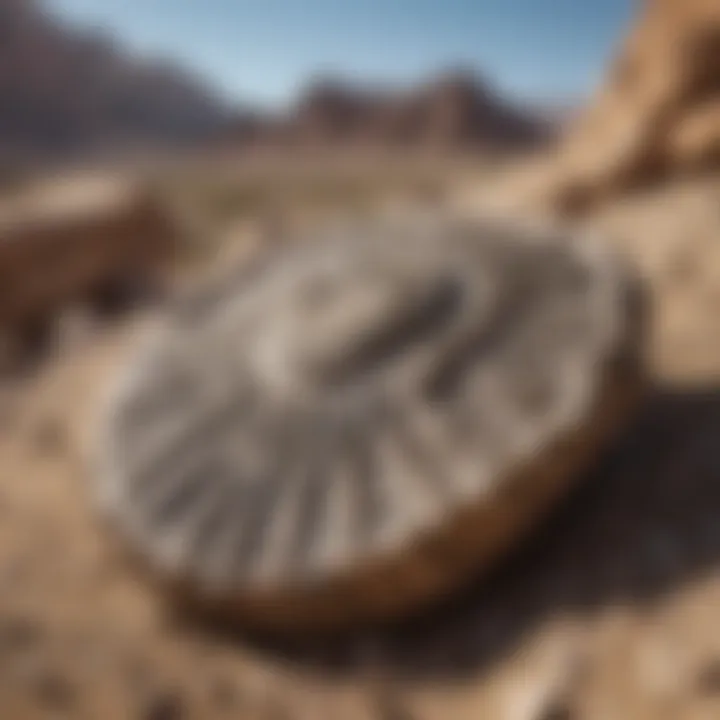
Intro
Las Vegas is often painted in neon lights and the dazzling allure of its entertainment scene. However, beneath this vibrant facade lies a treasure trove of paleontological wonders waiting to be explored. The bizarre landscapes and geological formations that surround the city are not just a backdrop for tourists; they have an intriguing story to tell about Earth’s distant past.
From fossilized remains of ancient creatures to relics that tell tales of prehistoric ecosystems, the fossil scene in Las Vegas is as multifaceted as it is surprising. This article seeks to peel back the layers of time and reveal the significance of these fossils. With a scarcity of natural history acknowledged in such an entertainment-centric city, it becomes essential to spotlight the local fossil findings, educational resources, and preservation efforts that are passionate about this fascinating field.
As we journey through this exploration, we will discuss various aspects, from highlighted collectible specimens to identification techniques that can help enthusiasts engage more deeply with their finds. Additionally, ethical considerations in collecting will not be overlooked, as they play a crucial role in the sustainability of fossil preservation.
Foreword to Fossils in Las Vegas
Fossils have been a critical key to understanding our planet’s history. This holds true even in a place like Las Vegas, where people often come for the flashy lights and entertainment rather than the ancient remnants of life. This section sets the stage for examining how fossils in the Las Vegas area contribute both to scientific knowledge and to the appreciation of natural history.
Las Vegas is surrounded by a landscape that tells a story going back millions of years, revealing secrets captured in stone. Exploring this topic serves multiple purposes: it illuminates the region's geological makeup, stirs curiosity among both locals and tourists, and emphasizes the need to protect these invaluable remnants from the past.
Defining Fossils
At its core, a fossil is the preserved remains or traces of animals, plants, and other organisms from the distant past. These remnants can range from bones and teeth to footprints and even feces, often termed coprolites. Detecting these treasures is not as simple as it sounds. Fossils form under very specific conditions, typically when organisms are buried rapidly after dying, preventing decay, or are preserved in amber or ice. The various types of fossils reveal different aspects of life on Earth, contributing to our understanding of evolution, climate shifts, and ancient ecosystems.
It’s easy to forget that what we see in museums or in a rock collection once belonged to living beings. The thrill of finding even a fragment fosters a desire to learn, to ask questions, and to appreciate the depth of time and life that surrounds us.
Las Vegas: Beyond the Strip
Many might see Las Vegas mainly for its casinos and shows, yet a plethora of history lies just beyond the bustling Strip. Nature creates a canvas of remarkable landscapes. The rugged mountains and valleys surrounding the city serve not only as picturesque vistas but also as geological time capsules. In places like Red Rock Canyon, one can find evidence of ancient rivers and lakes that once flowed where now deserts reside. Here, the layers of sediment speak to the processes that molded this land.
As locals and travelers alike explore these captivating natural formations, they may stumble upon fossilized corals or traces of creature tracks, remnants of ecosystems long gone. The juxtaposition of modernity against a backdrop steeped in such ancient history encourages a broader appreciation for the El Dorado of entertainment that is Las Vegas.
Ultimately, understanding the geological tapestry of this area enhances the allure of Las Vegas. Knowing that this city is more than just a playground adds a layer of complexity to its identity.
"Las Vegas is like a geological exhibition, where each layer tells a story, and fossils are the pen strokes of ancient history."
Uncovering fossils isn’t merely for the seasoned paleontologist; it's an entry point for anyone curious about the natural world. With guided activities and local expertise, budding fossil enthusiasts can find joy in connecting the past to the present, one discovery at a time.
Geological Context of Las Vegas
Understanding the geological context of Las Vegas is crucial to appreciate its fossil richness. This city, often discarded as merely a hub for entertainment, is deeply steeped in a unique and diverse geological history. The layering of vast sedimentary rocks tells a compelling story about the ecosystems that thrived here millions of years ago.
Ecosystems of the Past
The ecosystems that once existed in what is now Las Vegas were vibrant and diverse. During the Mesozoic era, this area was not the parched desert we see today. Instead, it was home to lush environments filled with various plants and animals. Imagine vast wetlands, dense coniferous forests, and expansive coastlines.
Fossils discovered in the region, like those of ancient ferns and dinosaurs, provide essential clues about these past ecosystems. For example, paleontologists have found remnants of species such as the Apatosaurus, indicating that herbivorous dinosaurs roamed these lands in search of plant life. The variety of fossils highlights the ecological diversity, showcasing a landscape teeming with life.
Furthermore, understanding these ecosystems allows researchers to draw parallels between the past and present. By studying fossilized remains, one can gain insight into how environments change over time and how living organisms adapt to these changes—a lesson that remains relevant amidst today’s concerns regarding climate change.
Rock Formations in the Region
The rock formations surrounding Las Vegas are nothing short of fascinating. These formations, largely sedimentary, serve as a geological archive revealing the Earth's history. Each layer of rock can be likened to a book in a library, with each layer adding details of ancient life forms.
Significant formations include the Frenchman Mountain formation and the Spring Mountains, which are composed of limestone, sandstone, and mudstone. The presence of these rocks indicates the area's transformation over time, from ocean floors to dry land. Some formations contain fossilized corals, which not only showcase the prehistoric marine life but also indicate the long-gone seabeds of the region.
Additionally, these formations play a role in studying paleoenvironments. Through detailed geological mapping and stratigraphy, researchers can understand the process of deposition and erosion, revealing how the environment shaped the organisms inhabiting it. The fascinating interplay of geology and paleontology continues to draw the attention of collectors and enthusiasts alike.
Sedimentary Layers and Fossilization
The process of fossilization is intimately tied to sedimentary layers—this is where the magic happens. Fossils typically form when organisms die and get buried under layers of sediment. Over time, pressure causes these layers to harden, permitting fossilization to occur.
In Las Vegas, the distinct layers of shale and mudstone have helped preserve many fossils. Conditions here can be excellent for fossil preservation, ensuring that the remnants of creatures from millions of years ago remain well intact.

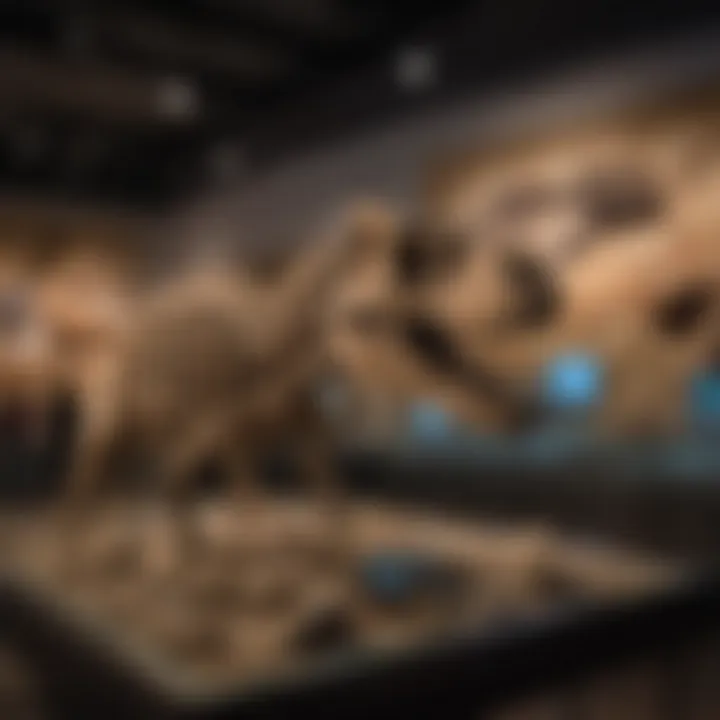
For collectors, understanding sedimentary layers is essential. Identifying the right strata makes all the difference. Different layers can yield varying types of fossils. For instance, a layer rich in marine sediment might produce shark teeth or shells, while a more terrestrial layer may reveal dinosaur tracks or plant fossils. Collectors must keep an eye out for the distinct characteristics of these sedimentary layers to maximize their finds.
"The history held within the rocks of Las Vegas is a testament to the complexity of life on Earth, waiting to be uncovered by those who seek its stories."
In summary, the geological context is more than just a backdrop—it is a crucial element in understanding the fossil narrative of Las Vegas. The ecosystems of yesteryears, the intricate rock formations, and the process of fossilization all intertwine to create an engaging story for those interested in the field of paleontology.
Notable Fossil Discoveries
Fossil discoveries in Las Vegas stand as a testament to the region's rich geological history. Despite its reputation as a city of flashing lights and entertainment, this desert locale hides a trove of ancient secrets beneath the surface. These discoveries provide not just valuable samples from the past, but also a lens through which paleontologists and enthusiasts can examine the evolutionary lineage of flora and fauna.
As scientists sift through sedimentary layers, they encounter a variety of fossilized remains. Each find serves as a crucial piece in the puzzle of Earth's history, illustrating how life has adapted and evolved over eons. Understanding these notables enables a deeper appreciation of the natural world and the environmental changes that have taken place.
Local Excavations
The story of fossil discoveries in Las Vegas often begins with local excavations. These sites, scattered across the Mojave Desert, have yielded fascinating specimens. For instance, the Nevada State Museum has been pivotal in uncovering fossils that span millions of years. One striking example is the remains of a prehistoric mammal known as the Merychippus, a relative of today’s horse but adapted to the broader, arid landscapes of ancient Nevada.
Excavation sites also reveal fossilized leaves, providing insights into past climates and ecosystems. Dedicated groups of amateur paleontologists frequently participate in these digs, seeking to enrich their knowledge while contributing to the scientific community. Additionally, the collaboration between local universities and field researchers has inspired educational initiatives that engage and inform the public about these discoveries.
Fossilized Remains of Flora and Fauna
Las Vegas is not just a graveyard for ancient animal life; it's also rich with fossilized remains of plants. The fossilized leaves and pods that have been unearthed tell stories of lush landscapes that once flourished where today’s casinos stand. For instance, remnants of the ancient Prototaxites, once towering forests, give clues about the predominant plant life during various geological epochs.
Animal fossils, on the other hand, reveal a diverse array of creatures. Some notable findings include the remains of large herbivores like Mammuthus, a woolly mammoth that roamed the plains, as well as smaller species like rodents and reptiles that thrived in that ecosystem. Collectively, these fossils create a vivid picture of an environment vastly different from our current one.
"Each fossil tells a story, not only of the species itself but of the epoch it belonged to and the environmental conditions that shaped its existence."
Significance of Findings
The implications of these discoveries stretch beyond academic curiosity; they have tangible significance. Each fossil found can lead to a better understanding of biodiversity through various eras and underline the importance of conservation efforts today. For instance, uncovering large mammal remains contributes crucial data to understand extinction patterns and climate changes that ushered these species into oblivion.
Furthermore, these fossils inform contemporary conservation strategies. By understanding how ancient ecosystems functioned, scientists can better advocate for modern ecosystems that are under threat from human activity. In sum, notable fossil discoveries in Las Vegas serve as both a rich source of knowledge for scientists and an inspiration for collectors, highlighting the urgency of preserving what remains.
Fossil Exhibits and Museums
Fossil exhibits and museums serve as crucial hubs for education, appreciation, and preservation of our planet's ancient life. In Las Vegas, where the bright lights and lively entertainment often overshadow the city's scientific treasures, these institutions play an essential role in public education and engagement. Through their exhibitions, they take visitors on a journey through time, showcasing the fascinating history of our planet and the remarkable organisms that once roamed it.
One of the key benefits of visiting these fossil exhibits is the opportunity to see actual specimens, each with its own story to tell. These displays not only offer a visual experience but also help bring to light the scientific processes behind fossilization and the significance of these discoveries. They can provide insights about the environments in which these organisms lived, offering context that enriches our understanding of paleontology and geology.
The Las Vegas Natural History Museum
The Las Vegas Natural History Museum is a treasure trove of information and specimens, focusing on multiple aspects of natural history, including paleontology. Its fossil collection includes a variety of exhibits showcasing dinosaurs, marine reptiles, and prehistoric flora. This museum is particularly well-known for its engaging displays that cater to enthusiasts of all ages, making it a popular stop for both locals and tourists.
The museum features well curated exhibits that not only display fossils but also educate visitors through interactive elements and knowledgeable guides. This enhances the experience by encouraging hands-on learning and sparking curiosity about the past. The Dinosaur Gallery, for instance, is a highlight, where visitors can marvel at a life-sized T-Rex model amid fossil displays that illustrate the evolution of these magnificent creatures. Such immersive experiences ignite a passion for the subject that might just inspire the next generation of paleontologists.
Exhibitions Featuring Local Finds
Exhibitions focusing on local fossil finds provide a unique lens through which to explore the geological history specific to the Las Vegas area. Here, the connection between the landscape and its ancient inhabitants becomes palpably clear. These showcases often feature specimens that were unearthed right in Nevada, effectively linking visitors to their own surroundings and instilling a sense of local pride.
One might come across exhibits highlighting fossils from the Eureka Quartzite, a significant geological formation known for its ancient marine fossils, including corals, trilobites, and brachiopods. Understanding the history of this area enriches the appreciation for the broader context of fossilization and geological change.
"Fossils are not just remnants of the past. They are a bridge connecting us to the story of life on Earth."
The Importance of Fossil Preservation
Fossil preservation is of paramount importance not only to understanding the geology of an area like Las Vegas but also to appreciating the biological history that the region has to offer. Fossils serve as the only tangible link we have to the past, allowing us to piece together the story of life on Earth. When we talk about preserving fossils, we are talking about more than just saving remnants of ancient creatures and plants. We are advocating for the conservation of biodiversity, which impacts many elements of our modern ecosystems.
The value of fossils extends into various sectors, including education, research, and even tourism. Some might say that fossils are like the pages of a book waiting to be read; they hold countless secrets and histories, which, when deciphered, can enlighten our understanding of climate changes and evolutionary trends over millions of years.
"Conserving our fossil heritage is a responsibility we owe to future generations, as these findings are windows into a time we can only imagine."
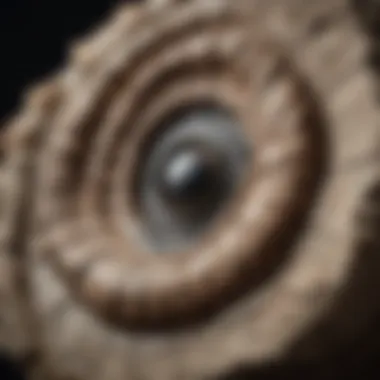

Conservation Efforts in Nevada
In Nevada, conservation efforts are actively in place to protect fossil sites from human damage and natural erosion. The Bureau of Land Management (BLM) plays a crucial role in managing these fossil-rich areas. They organize educational programs aimed at raising awareness about fossils and their significance. Field trips are often hosted for schools to encourage a hands-on approach to learning about natural history. Local volunteers frequently engage in organized clean-up and preservation efforts, ensuring that excavation sites remain intact.
One specific initiative that stands out involves the collaboration between museums and local educational institutions. By partnering together, they aim to foster a community-focused approach to fossil conservation. Initiatives such as the Nevada State Museum's paleontology program work to engage the public in fossil protection efforts, encouraging community stewardship.
Legal Framework: How Fossils Are Protected
In terms of legislation, Nevada has various laws in place to protect fossils from illegal collection and damage. Under the Paleontological Resources Preservation Act, fossils found on federal lands are protected. This law categorically prohibits unauthorized excavation and ensures that any scientific discoveries are documented appropriately. Collectors often need to navigate legal channels to ensure they are adhering to regulations, which is critical in maintaining the integrity of Nevada's paleontological treasures.
Notably, state laws dictate that collecting fossils on private property requires the consent of the landowner, further emphasizing responsible collecting practices. Not only does this legal framework preserve the fossil record, but it also serves to educate the public about the appropriate methods of fossil collection and the importance of adhering to these laws.
In summary, the framework of preservation and the joint efforts put forth by various organizations are essential for ensuring that fossils in Las Vegas and throughout Nevada are protected for years to come.
Collecting Fossils: An Overview
The art of fossil collecting is not a simple pastime. It carries with it a deep-rooted significance—an avenue to connect with the distant past and to understand the ever-changing dynamics of Earth. In Las Vegas, a desert city often known for its glitz and glam, fossil collecting offers a unique glimpse into a rich geological history. From prehistoric marine life to ancient land-dwelling creatures, the fossils found in this area tell compelling stories that enrich not just the collector’s personal journey but also contribute to broader scientific knowledge.
This section dives into the nuances of fossil collection, addressing the ethical implications, best practices for enthusiasts, and legal frameworks surrounding this intriguing pursuit. Whether you are a seasoned collector or merely curious, understanding these facets can illuminate the path ahead.
Ethical Considerations
When you think about fossil collecting, what might come to mind are the thrill and excitement. However, behind that allure lies a duty of care to the natural world. Collectors ought to tread carefully when gathering fossils, as unethical practices can lead to irreversible damage to ecosystems. Here are some key points to ponder:
- Respect for Nature: Collectors should be aware of the habitats they are disrupting. Some areas serve as crucial environments for local wildlife. Taking a fossil should never come at the expense of the ecosystem.
- Cultural Sensitivity: Certain sites hold sacred value for indigenous peoples or local communities. Collecting fossils from such areas without proper consultation can lead to a disconnection from cultural heritage.
- Sharing Knowledge: An informed collector contributes to the community. Sharing discoveries can help scientists and educators better understand the significance of local fossils.
Adhering to these ethical considerations is vital for ensuring that future generations can also experience the riches that fossil hunting has to offer.
Best Practices for Amateur Collectors
If you’re new to fossil collecting, there are practices that can elevate your experience while minimizing harm. Here’s a short list of some effective strategies:
- Research First: Before heading out, read about locations and types of fossils found. Local geology can be quite varied.
- Get Permission: Always seek permission if you’re collecting on private land. Being respectful goes a long way.
- Use the Right Tools: A basic kit might include a hammer, chisel, and safety goggles. Avoid heavy machinery unless trained.
- Document Your Finds: Keep detailed records of where and when you found your fossils. This information is helpful for scientific research and personal records.
- Join a Community: Connecting with other collectors can enhance your knowledge and deepen your experience. Local clubs may offer field trips or workshops.
These practices not only enhance the joy of collecting but also ensure a responsible approach to a hobby that impacts both history and ecology.
Local Rules and Regulations
While the freedom to collect fossils is enticing, potential collectors must be aware of the legal restrictions that shape this hobby. Neglecting to follow the rules can lead to dire consequences. Important points include:
- State Laws: Nevada has specific regulations regarding fossil collection. Familiarize yourself with these to avoid hefty fines.
- Permits: Some locations may require permits for collecting fossils, especially in protected areas such as national parks or reserves. Always check with local authorities.
- Collection Limits: There are often limits on how many fossils you can take in one visit. Respect these guidelines to ensure sustainability.
- Reporting Finds: If you discover an unusual fossil, it may need to be reported to a local museum or geological society. This reporting could contribute to valuable research.
Collecting fossils can be thrilling and rewarding, yet it comes hand-in-hand with responsibility. By following ethical guidelines, adopting best practices, and adhering to local regulations, collectors can enjoy and protect the incredible secrets our planet holds.
Communities and Resources for Fossil Enthusiasts
Fossil hunting can be a solitary pursuit, but there’s enormous value in connecting with others who share your passion. The world of fossils, particularly in a place as unique as Las Vegas, is enriched by local communities and available resources. Connecting with enthusiasts—whether they be seasoned collectors or curious novices—can offer insights, tools, and camaraderie that enhance the overall experience.
Local Clubs and Organizations
In Las Vegas, there are several clubs and organizations that cater to fossil aficionados. One prominent group is the Las Vegas Fossil Club, which serves as a gathering point for individuals interested in paleontology, geology, and other related fields. The club regularly hosts meetings that include presentations, discussions, and field trips. Engaging with these local clubs provides members with the chance to learn not only about local fossils but also about broader themes in paleontology and geology.
Membership in such organizations often includes access to:
- Workshops: Hands-on sessions that could teach techniques on fossil preparation or identification.
- Guest Speakers: Experts from the region sharing insights on particular subjects related to fossils, past discoveries, or ongoing excavations.
- Field Trips: Organized outings to dig sites that make fossils available to the public, sharing an experience that might not be possible alone.
These opportunities help to foster a sense of community while imparting valuable knowledge. Additionally, being part of a club often opens doors for networking, granting individuals access to mutual resources that can be beneficial for personal collections.
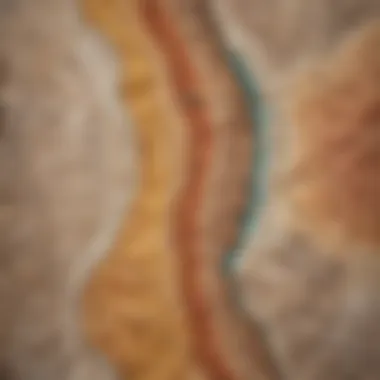

Online Resources and Forums
The digital age has revolutionized how enthusiasts connect and glean information. Several online platforms serve as fantastic hubs for fossil enthusiasts to share experiences, seek advice, and trade stories about their latest finds. Websites like Reddit feature dedicated forums where users can ask questions and share their fossil-related adventures. Such spaces are brimming with individuals eager to share knowledge, sometimes even offering insights about less publicized fossil sites.
Here are some online resources worth exploring:
- Facebook Groups: There are numerous fossil collecting groups where members display their latest finds and offer tips on identifying fossils.
- Wikipedia and Britannica: Reliable sources that provide foundational knowledge about fossils, their significance, and their formation.
- Dedicated Websites: Certain sites focus on regional specifics, including Las Vegas, and can point enthusiasts to notable excavation spots or ongoing research.
In these forums, it’s crucial to engage respectfully and mindfully, providing or seeking information without overwhelming others. These online communities represent a treasure trove of insight where seasoned collectors can offer support to newcomers, creating an enriching environment that mutually elevates the understanding of fossils.
"The only thing better than finding a fossil is sharing the excitement of that find with others. It transforms the experience and deepens your knowledge."
Navigating through these community avenues and online portals not only broadens one's skills in fossil collecting but also nurtures a shared passion that resonates throughout the field, particularly in an area as curious as Las Vegas.
Educational Opportunities
The exploration of fossils, particularly in a region with a unique geological background like Las Vegas, offers much more than mere hobbyist engagement. It cultivates an appreciation for Earth's ancient history, fosters scientific curiosity, and promotes conservation efforts through education. The significance of educational opportunities in this context lies not just in theoretical learning but in practical application as well, allowing enthusiasts of all ages to connect with the tangible remnants of the past.
Workshops and Events
Participating in workshops and events focused on fossils can be a game-changer for those keen on delving deeper into paleontology. These gatherings are often hands-on, letting participants engage directly with specimens and tools used in fossil preparation and analysis. Workshops frequently cover various topics, such as:
- Fossil identification techniques: Learning how to distinguish between different types of fossils is crucial for both novice and seasoned collectors.
- Field collecting practices: Workshops often include aspecs about the right equipment to use and the ethics involved in collecting.
- Preservation methods: Understanding how to care for fossils can preserve their integrity for future generations.
Local museums or universities frequently host these events, making it easy for enthusiasts to find opportunities right at their doorstep. Notably, the camaraderie developed during these workshops can enrich one's fossil-collecting journey, providing both friendship and shared knowledge.
Lectures and Seminars
Lectures and seminars offer a more academic route into the world of fossils. Often led by experienced paleontologists or geology experts, these sessions bring cutting-edge research and discoveries to the forefront. Attendees gain insights into:
- Recent fossil findings: Experts might discuss the latest excavations or research projects, shedding light on new species or ecosystems.
- Theoretical frameworks: Understanding the broader implications of fossil studies on our knowledge of evolution and climate change can deepen one’s appreciation for the subject.
- Career paths in paleontology: This can be especially beneficial for students or those looking to pivot into scientific careers.
Lectures not only cater to those with a scientific background but are also accessible to the curious minds among the public, ensuring a diverse audience. Those attending may find themselves inspired to further explore the challenges and discoveries in the field.
Field Trips and Expeditions
One of the most rewarding ways to learn about fossils is through field trips and expeditions. These excursions allow participants to explore fossil sites, often guided by seasoned paleontologists or educators. The value of field trips lies in their immersive experience, which includes:
- Real-world fossil hunting: Searching for fossils in their natural environments can be thrilling. It provides a firsthand understanding of the conditions that lead to fossilization.
- Collaboration and mentorship: Participants often benefit from expert guidance—learning methods of excavation while fostering a connection with those who share their interest.
- Direct engagement with geology: Seeing geological formations up close adds context to the learned material and highlights the complex history written in the rock layers.
Such trips may explore notable sites around Las Vegas, including areas known for trilobite or marine remains. Taking part in these expeditions catalyzes the bonding experience among participants, enhancing community ties while cultivating an understanding of the science at hand.
"Education is the most powerful weapon which you can use to change the world." — Nelson Mandela
The End
In summarizing the fascinating subject of fossils in Las Vegas, we find a rich tapestry woven from the threads of geological history, preservation efforts, and community engagement. Fossils are not merely remnants of the past; they serve as crucial links connecting us to ancient ecosystems and the evolution of life on our planet. Emphasizing their value allows hobbyists, educators, and local inhabitants alike to appreciate the layered history under their feet, hidden beneath the neon lights of a city known primarily for its entertainment.
Reflecting on the Value of Fossils
Fossils offer a window into times long gone, capturing the essence of life that flourished eons before us. Each specimen found around Las Vegas can tell a story—not just of the organism itself, but of the environment they thrived in. For instance, the fossilized remains of the ancient marine life, such as Ammonites, that once thrived here in a warm ocean are reminders of a vastly different landscape.
Beyond scientific curiosity, fossils also foster a sense of connection to the planet's past. They can instill a profound respect for both nature and time. Understanding how species adapted or went extinct can provoke thought about our own impact on the environment today.
Moreover, fossils play a pivotal role in education, inspiring future generations of paleontologists and geologists. Workshops, lectures, and museum exhibitions not only inform but also ignite passion in learners, fostering a community dedicated to the conservation of this invaluable resource.
Future of Fossil Exploration in Las Vegas
Looking ahead, the future of fossil exploration in Las Vegas appears promising. As more local enthusiasts and paleontologists take interest in the region's geological features, awareness will grow. The potential for further discoveries is immense, particularly as technology advances. New methods, such as remote sensing and 3D imaging, will likely unveil fossils previously overlooked.
Additionally, collaborations between museums and universities will be key in propelling research and education forward. Public outreach initiatives targeting schools can make fossil science more accessible, drawing in younger generations to the thrilling world buried beneath the layers of sediment.
Furthermore, as public interest builds, there will be a greater impetus for policy changes that enhance fossil preservation efforts. Community involvement in conservation can greatly impact how fossils are treasured and protected for the future.
In essence, the journey of exploring fossils in Las Vegas is just beginning. It is an exciting path that promises more revelations, deeper understanding, and a stronger connection to our natural history.



